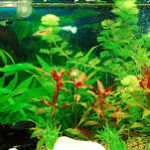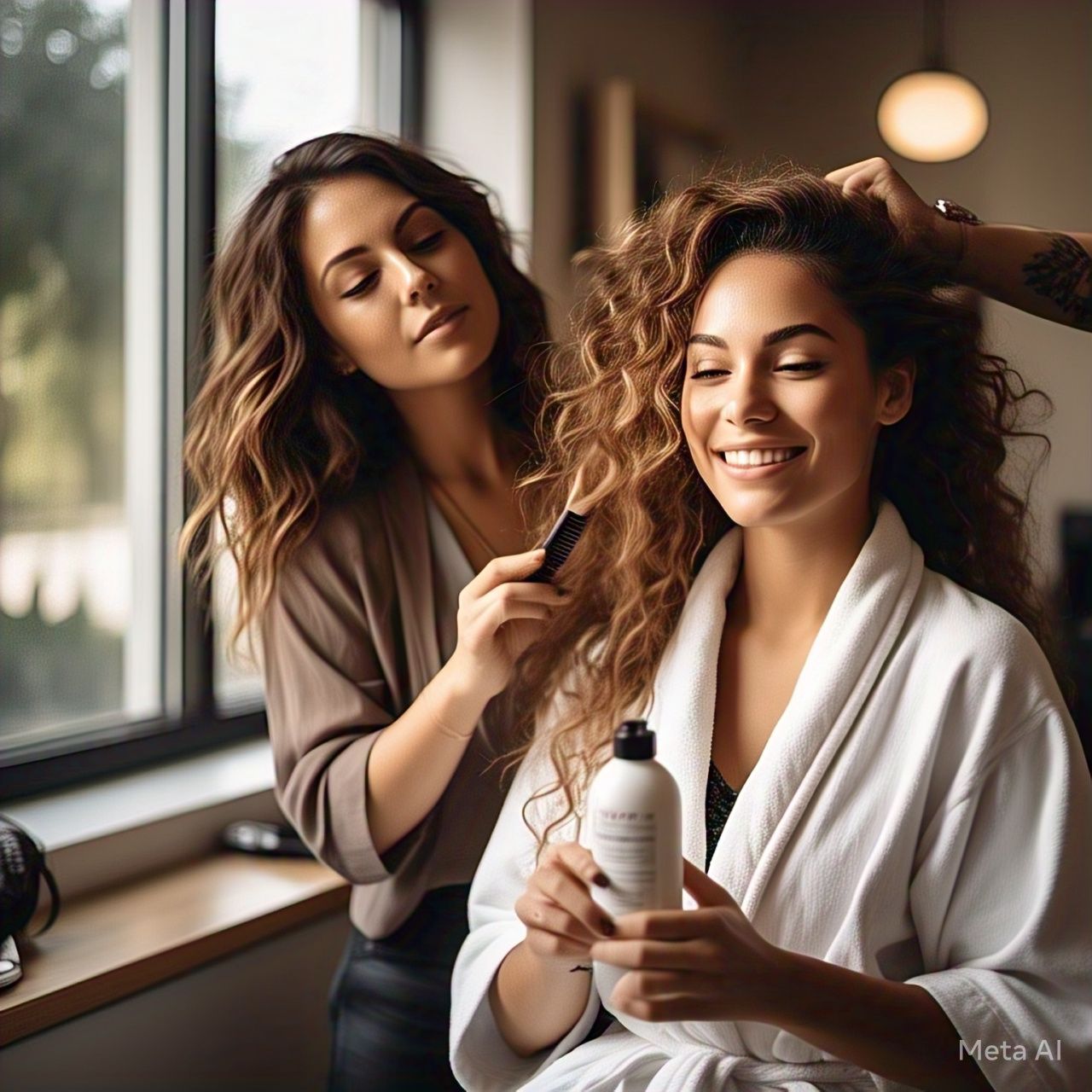The Battle Against Hair Breakage and Split Ends
Hair damage is one of the most common concerns for people of all hair types. Whether caused by heat styling, harsh weather conditions, or poor hair care practices, hair breakage and split ends can make hair appear dull, lifeless, and unhealthy. As a result, individuals are often in search of effective solutions to restore their hair to its natural, vibrant state.
One of the most crucial steps in tackling hair breakage and split ends is using a conditioner that specifically targets these issues. Conditioners not only help hydrate and moisturize the hair but also provide the nourishment necessary to repair damage and prevent further breakage. Choosing the right conditioner can make all the difference in restoring hair to its healthy, shiny best.
This article delves into the most effective conditioners for hair breakage and split ends. It explores the ingredients, benefits, and key features to look for when selecting the best conditioner for your hair type. With an emphasis on treatments that promote healthy hair growth and repair, this guide will help individuals identify the right products to address their specific hair needs.
Understanding Hair Breakage and Split Ends: Why They Occur
Before diving into the best conditioners, it’s important to understand why hair breakage and split ends happen in the first place. Hair is made of a protein called keratin, and each strand has three layers: the cuticle, cortex, and medulla. When these layers become damaged, hair strands weaken, resulting in breakage or split ends.
Several factors contribute to hair damage. Overuse of heat styling tools such as straighteners, curling irons, and blow dryers is one of the leading causes. The high temperatures can strip the hair of its natural moisture, making it more prone to dryness and breakage. Similarly, chemical treatments such as coloring, bleaching, and perming can weaken the hair structure, causing split ends.
Environmental factors also play a significant role in hair damage. Exposure to the sun, harsh winds, or pollution can lead to dry, brittle hair that is prone to splitting. Additionally, improper hair care practices such as brushing wet hair or using harsh shampoos can cause friction and stress on the hair, further exacerbating the problem.
For those struggling with hair breakage and split ends, using the right conditioner can help replenish moisture, strengthen the hair shaft, and prevent future damage. Conditioners designed for damaged hair often contain a blend of moisturizing agents, proteins, and essential oils that work together to restore hair health and improve its appearance.
Key Ingredients to Look for in Conditioners for Hair Breakage and Split Ends
When choosing a conditioner for hair breakage and split ends, it’s essential to consider the ingredients that can help repair and protect the hair. The following ingredients are commonly found in products that target hair damage:
-
Keratin – Keratin is a protein naturally found in hair, skin, and nails. It helps strengthen the hair shaft and repair damage. Conditioners containing keratin can help replenish lost protein and promote stronger, healthier hair.
-
Argan Oil – Argan oil is rich in antioxidants, essential fatty acids, and vitamin E, making it an excellent choice for nourishing dry, brittle hair. It helps restore moisture and shine while improving the elasticity of the hair, preventing future breakage.
-
Shea Butter – Shea butter is a deeply hydrating ingredient that helps soothe dry and damaged hair. It penetrates the hair shaft to provide moisture, making hair softer and more manageable.
-
Amino Acids – Amino acids are the building blocks of proteins like keratin. Conditioners containing amino acids help strengthen hair and repair damage at the molecular level, leading to healthier, less brittle hair.
-
Silicone – While silicones can sometimes be controversial in hair care, they can be effective in sealing moisture into the hair and smoothing the cuticle. This can reduce the appearance of split ends and make hair feel silky and soft.
-
Coconut Oil – Coconut oil is known for its deep moisturizing properties. It helps prevent hair protein loss and adds shine while also protecting the hair from further damage.
-
Vitamin E – Vitamin E is an antioxidant that helps repair damaged hair and promote healthy growth. It also helps protect the hair from environmental stressors, making it a valuable ingredient in conditioners for damaged hair.
By looking for conditioners that contain these beneficial ingredients, individuals can find products that not only hydrate and moisturize their hair but also help repair and protect it from further damage.
The Role of Moisture in Preventing Hair Damage
One of the most important factors in preventing hair breakage and split ends is maintaining adequate moisture levels. Dry hair is more susceptible to damage, as it lacks the necessary hydration to stay flexible and strong. Conditioners that provide long-lasting moisture help keep the hair cuticle smooth, preventing friction and breakage.
Moisturizing conditioners work by replenishing the hair’s natural moisture balance, which is crucial for maintaining elasticity and strength. Regular use of a moisturizing conditioner can help restore shine and softness, making the hair look healthier and less prone to splitting.
For those with severely damaged hair, deep-conditioning treatments can provide an extra boost of hydration. These treatments typically contain heavier moisturizers and are designed to penetrate the hair shaft more deeply than regular conditioners, providing intense hydration and repair.
Choosing the Right Conditioner for Different Hair Types
When it comes to selecting the best conditioner for hair breakage and split ends, it’s important to consider your specific hair type. Different hair textures and needs require different products to provide the most effective results. Whether your hair is fine, thick, curly, or straight, understanding how to match your conditioner with your hair type will help ensure you get the best possible results.
Fine Hair: Lightweight and Repairing
For individuals with fine hair, it’s essential to choose a conditioner that provides the necessary moisture without weighing the hair down. Fine hair can be particularly prone to breakage because of its delicate structure, so it’s important to find a lightweight conditioner that strengthens without causing limpness.
Look for conditioners that contain strengthening ingredients like keratin and amino acids, as they help rebuild damaged hair from within. Lightweight moisturizing agents like aloe vera and coconut water are also great choices, as they hydrate the hair without making it feel heavy. Avoid conditioners with a lot of oils or heavy creams, as they may cause fine hair to look greasy or flat.
For those with fine hair that’s also oily, opt for a volumizing conditioner that can add body while maintaining moisture balance. These conditioners often contain ingredients like rice protein or biotin, which help to strengthen and thicken the hair while preventing it from looking weighed down.
Thick Hair: Rich, Nourishing Formulas
Thick hair often requires a richer conditioner to provide sufficient hydration and manageability. Individuals with thick, coarse hair may struggle with dryness and breakage if their conditioner is not hydrating enough to keep up with their hair’s needs. A heavier, more nourishing formula is essential to penetrate the hair shaft and lock in moisture.
Ingredients such as shea butter, argan oil, and jojoba oil are perfect for those with thick hair. These ingredients deeply moisturize the hair and improve its elasticity, making it less prone to breaking. Additionally, thick hair often benefits from conditioners that contain smoothing agents, as they help tame frizz and enhance shine.
For severely damaged thick hair, using a deep conditioning treatment or hair mask once a week can provide an extra layer of hydration and repair. Look for products with a higher concentration of nourishing oils and proteins to help restore moisture and repair split ends.
Curly Hair: Moisturizing and Defining
Curly hair is unique in that it tends to be drier and more prone to frizz compared to straight hair. The natural texture of curly hair makes it difficult for oils from the scalp to travel down the entire length of the hair strand, which is why moisture retention is a common issue for individuals with curls. A moisturizing conditioner that also defines curls can go a long way in preventing breakage and split ends.
Look for conditioners that contain rich moisturizing agents like shea butter, coconut oil, and glycerin, which help to hydrate and smooth the hair. Additionally, conditioners with proteins like silk amino acids and hydrolyzed wheat protein can help strengthen and protect the hair from damage.
For curly hair that’s prone to frizz, using a leave-in conditioner or a curl-enhancing product after washing can help define the curls and prevent them from becoming dry or brittle. Avoid using heavy products that can weigh the curls down or leave them looking greasy, as this can lead to breakage over time.
Straight Hair: Strengthening and Repairing
Straight hair, while generally less prone to frizz, can still suffer from split ends and breakage due to dryness or lack of moisture. Individuals with straight hair should focus on conditioners that help strengthen and repair the hair without making it feel heavy or greasy. Lightweight formulas are often the best option, as they provide enough moisture without weighing down the hair.
Conditioners that contain strengthening ingredients like keratin and biotin are ideal for straight hair, as they work to rebuild the protein structure of the hair. For individuals with color-treated or chemically processed straight hair, using a conditioner that focuses on repair is essential to restore moisture and prevent further damage. Look for products that specifically target color-treated hair, as they help lock in color while moisturizing the hair to prevent breakage.
Understanding Sulfate-Free Conditioners: Are They Better for Damaged Hair?
In recent years, sulfate-free shampoos and conditioners have gained popularity, particularly among individuals with damaged or chemically treated hair. Sulfates are harsh detergents found in many traditional shampoos and conditioners that strip away natural oils from the scalp and hair. While this helps to clean the hair, it can also lead to dryness, irritation, and further damage, especially for those with already brittle or damaged hair.
Sulfate-free conditioners are a gentler alternative that can help prevent moisture loss while still providing effective cleaning and conditioning. These products typically use milder surfactants to cleanse the hair without stripping it of its natural oils. For individuals with dry or damaged hair, sulfate-free conditioners can help maintain the hair’s hydration balance and minimize further breakage.
However, not all sulfate-free conditioners are created equal. Some may still contain other potentially irritating ingredients or fragrances, so it’s important to check the full list of ingredients when selecting a product. Look for sulfate-free conditioners that contain moisturizing ingredients like aloe vera, coconut oil, or glycerin, which can hydrate and repair damaged hair without causing further irritation.
Conditioning Treatments vs. Regular Conditioners: Which Is Best for You?
While regular conditioners are great for everyday use to maintain the health and moisture balance of the hair, conditioning treatments or deep conditioners may be necessary for individuals with severe hair damage, split ends, or breakage. These treatments are designed to penetrate deeply into the hair shaft, providing intensive hydration and repair that regular conditioners may not offer.
Deep conditioning treatments are typically thicker and more concentrated than regular conditioners. They are often left on the hair for an extended period (usually 10-20 minutes) to allow the ingredients to fully absorb and work their magic. These treatments are ideal for those looking to restore severely damaged hair or prevent further breakage.
Conditioning treatments often contain higher concentrations of nourishing ingredients like oils, proteins, and vitamins. For those dealing with persistent split ends, using a deep conditioner once or twice a week can significantly improve the overall health of the hair and reduce the appearance of damage.
Top Conditioners for Hair Breakage and Split Ends
Now that we’ve explored the importance of choosing the right conditioner for different hair types, it’s time to look at some of the best conditioners on the market that are specifically designed to tackle hair breakage and split ends. These conditioners are formulated with nourishing ingredients that restore moisture, repair damage, and protect hair from further harm. Below, we will explore some of the most effective conditioners for individuals looking to repair their damaged hair and reduce breakage.
1. Olaplex No. 5 Bond Maintenance Conditioner
Olaplex has become a household name in hair care due to its innovative approach to repairing and strengthening damaged hair. The Olaplex No. 5 Bond Maintenance Conditioner is formulated with the brand’s signature Bond Building Technology, which works to reconnect broken disulfide bonds in the hair. This helps repair the structural damage caused by chemical treatments, heat styling, and environmental stressors.
Ideal for individuals with chemically treated or damaged hair, this conditioner provides deep hydration and restores the hair’s strength. It is free from sulfates, parabens, and phthalates, making it a safe choice for sensitive scalps. Users often report softer, smoother hair with noticeable improvements in strength after regular use.
2. Redken Extreme Conditioner
Redken’s Extreme Conditioner is another top choice for those dealing with hair breakage and split ends. This conditioner is enriched with a blend of proteins and amino acids that penetrate deep into the hair shaft to repair and strengthen from the inside out. It also contains ceramides, which help reinforce the hair’s cuticle, making it more resilient to breakage.
For individuals with fine, weak, or damaged hair, Redken Extreme Conditioner provides an excellent balance of moisture and strength. It leaves the hair feeling nourished and soft while protecting it from future damage. This product is particularly effective for people who frequently use heat styling tools, as it helps prevent further damage and maintains the hair’s overall health.
3. Briogeo Don’t Despair, Repair! Deep Conditioning Mask
While this product is technically a deep conditioning mask, the Briogeo Don’t Despair, Repair! Deep Conditioning Mask is a powerful treatment that can also be used as a regular conditioner for individuals with severely damaged hair. This mask is packed with nourishing ingredients like rosehip oil, algae extract, and B vitamins, which work together to hydrate and repair dry, brittle hair.
Perfect for individuals with curly or coarse hair, this conditioner helps restore moisture and elasticity while smoothing the cuticle to reduce frizz and split ends. It also contains shea butter, which helps strengthen and protect the hair from future breakage. Users report shinier, healthier-looking hair after regular use of this deep conditioner, making it an excellent choice for those with serious hair damage.
4. Pureology Strength Cure Superfood Treatment
Pureology’s Strength Cure Superfood Treatment is another excellent choice for individuals looking to repair and protect their hair from breakage and split ends. This conditioner is enriched with a blend of nourishing superfoods, including avocado oil, coconut oil, and olive oil, which provide deep hydration and strengthen the hair from root to tip.
Strength Cure Superfood Treatment is designed to target damaged hair, making it perfect for individuals with color-treated hair that has become weak and brittle. The formula is sulfate-free and vegan, making it a great option for those who prefer cruelty-free products. This conditioner helps restore moisture balance, reduce breakage, and leave hair feeling soft and manageable.
5. Kerastase Resistance Bain Force Architecte Shampoo and Conditioner
Kerastase is a luxury brand known for its high-performance hair care products, and the Resistance Bain Force Architecte Shampoo and Conditioner duo is a standout product for individuals with damaged hair. The conditioner contains a unique combination of Pro-Keratin and Ceramides, which work together to rebuild the hair’s internal structure and restore strength.
This conditioner is ideal for individuals with weak, brittle hair who need extra care to prevent breakage. It provides both immediate and long-term benefits by strengthening the hair while keeping it moisturized. The formula is also designed to protect the hair from future damage, making it an excellent preventative treatment for those prone to split ends and hair breakage.
6. Pantene Pro-V Repair and Protect Conditioner
For those looking for a more affordable yet effective option, Pantene’s Pro-V Repair and Protect Conditioner offers a powerful solution for damaged hair. This conditioner is infused with Pantene’s signature Pro-Vitamin B5 complex, which nourishes and strengthens hair while reducing the appearance of split ends.
Pantene’s Repair and Protect Conditioner helps restore moisture and smooths the hair, making it less prone to breakage. It also works to protect the hair from environmental stressors and styling damage. While it may not be as intensive as some high-end products, it provides significant benefits for individuals on a budget, especially for those with mild to moderate hair damage.
7. Living Proof Restore Conditioner
Living Proof is a brand known for its scientifically-backed formulas that address specific hair concerns. The Living Proof Restore Conditioner is formulated to restore moisture and strengthen the hair while protecting it from future damage. It contains a patented Healthy Hair Molecule (OFPMA), which coats the hair to provide long-lasting protection and smoothness.
This conditioner is ideal for individuals with damaged, dry, or chemically treated hair. It helps restore the hair’s natural shine and elasticity, reducing the risk of split ends and breakage. Living Proof Restore Conditioner is particularly beneficial for those with fine or medium-textured hair, as it provides hydration without weighing the hair down.
8. Maui Moisture Heal and Hydrate + Shea Butter Conditioner
For individuals with thick, dry, or curly hair, the Maui Moisture Heal and Hydrate + Shea Butter Conditioner offers a deeply moisturizing and nourishing treatment. This conditioner is formulated with a blend of shea butter, coconut oil, and macadamia oil, which work together to hydrate and soften the hair while repairing damage and reducing frizz.
Maui Moisture’s unique formula is free from sulfates and parabens, making it a gentle choice for individuals with sensitive scalps. It provides long-lasting hydration, leaving hair looking healthier, shinier, and more manageable. This conditioner is particularly useful for those dealing with dry, brittle hair and frequent breakage, as it restores moisture and strengthens the hair from within.
9. Amika The Kure Bond Repair Conditioner
Amika’s The Kure Bond Repair Conditioner is a great option for individuals looking to repair and restore damaged hair. The formula contains a blend of nourishing ingredients such as jojoba oil and sea buckthorn berry, which help repair and protect the hair from further damage.
The Kure Bond Repair Conditioner is perfect for those with color-treated or heat-damaged hair. It works to restore the hair’s natural strength and prevent breakage, leaving the hair feeling soft, shiny, and manageable. Regular use of this conditioner can help reduce the appearance of split ends and promote healthier hair growth.
Choosing the Right Conditioner: Factors to Consider
When selecting a conditioner for hair breakage and split ends, there are several factors to consider to ensure the product meets your specific needs. First and foremost, take into account your hair type. As discussed earlier, fine, thick, curly, and straight hair all require different formulations to achieve the best results. Additionally, consider the level of damage your hair has sustained. Severely damaged hair may require a more intensive treatment, such as a deep conditioning mask or a product with added protein.
Another important factor to consider is the ingredient list. Opt for conditioners that contain beneficial ingredients like keratin, amino acids, and natural oils, which provide moisture and help rebuild the hair’s structure. Avoid products with harsh chemicals, sulfates, or parabens, as these can further damage the hair and make it more prone to breakage.
Lastly, consider how the conditioner fits into your overall hair care routine. Some conditioners are designed to be used in conjunction with shampoos and other treatments, while others are meant to be used alone for daily maintenance. Choose a product that works with your existing hair care routine and meets your specific needs for hair health and repair.
Maintaining Healthy Hair: Additional Tips for Preventing Breakage and Split Ends
While choosing the right conditioner is essential for repairing and preventing hair breakage and split ends, there are other practices and habits that can significantly contribute to the overall health of your hair. In this final part, we will explore some additional tips and tricks that can help individuals maintain healthy hair and prevent further damage. These strategies, when combined with the use of a quality conditioner, can make a noticeable difference in the appearance and feel of your hair.
1. Gentle Hair Care Practices
One of the most effective ways to prevent hair breakage and split ends is to adopt gentle hair care practices. Many individuals unknowingly contribute to hair damage through rough handling during washing, drying, and styling. Here are a few key steps to ensure that hair remains protected:
-
Avoid aggressive towel drying: Rubbing hair with a towel after washing can cause friction, leading to breakage and split ends. Instead, gently pat the hair dry or wrap it in a soft towel to absorb excess moisture without roughing up the strands.
-
Detangle with care: Using a wide-tooth comb or a detangling brush to gently remove knots can prevent hair from snapping. Always start from the ends of the hair and work your way up to the roots, applying minimal pressure to avoid causing unnecessary strain on the hair.
-
Be cautious with heat styling: Heat styling tools such as blow dryers, curling irons, and flat irons can cause significant damage to the hair if not used properly. Always use a heat protectant spray before styling, and aim to keep the temperature setting on the lower side to minimize heat damage.
2. Regular Trimming
Regular trimming is one of the simplest yet most effective ways to prevent split ends and breakage. Even if you’re trying to grow your hair out, trimming the ends every six to eight weeks ensures that split ends don’t travel up the hair shaft, causing further damage. If you’re unsure about how much to trim, ask your stylist for advice on how much length to take off based on the condition of your hair.
Trimming the hair doesn’t just prevent split ends; it also helps maintain overall hair health and promotes a healthier appearance. With regular trims, hair looks fuller, shinier, and healthier, as dead ends are removed, leaving room for healthier growth.
3. Protecting Hair While Sleeping
While many people think of hair care during the day, it’s just as important to protect hair while sleeping. The friction caused by tossing and turning at night can lead to tangling, breakage, and split ends. Fortunately, there are several steps you can take to safeguard your hair during sleep:
-
Use a silk or satin pillowcase: Cotton pillowcases can cause friction with the hair, leading to breakage and frizz. Switching to a silk or satin pillowcase reduces friction and helps the hair retain moisture, keeping it smoother and preventing breakage.
-
Tie hair loosely: If you prefer to tie your hair back at night, be sure to use a loose hair tie made of soft fabric. Tight hair ties can cause breakage, especially when left in for long periods of time. Opting for a scrunchie or a silk hair tie helps prevent unnecessary tension on the hair.
-
Consider a protective hairstyle: For individuals with longer hair, protective styles such as braids or buns can help prevent hair from tangling and snapping while you sleep. Just be sure not to pull the hair too tight, as this can cause stress on the strands and result in breakage.
4. Nourishing Your Hair from the Inside Out
Hair health isn’t just about the products you apply on the outside; it also involves taking care of your body from the inside. A nutritious diet rich in essential vitamins and minerals can support hair growth and prevent damage. For healthy, strong hair, it’s important to include the following nutrients in your diet:
-
Vitamin A: Essential for cell growth, Vitamin A helps keep the scalp healthy and supports the production of sebum, which naturally moisturizes the hair.
-
Biotin: Biotin is a B vitamin that plays a key role in hair health by strengthening hair follicles and encouraging growth. Biotin deficiency can lead to brittle hair and hair loss, so incorporating biotin-rich foods like eggs, nuts, and whole grains can help prevent this.
-
Vitamin E: Known for its antioxidant properties, Vitamin E improves circulation in the scalp, which helps support hair growth and repair. It also protects the hair from oxidative stress caused by environmental factors.
-
Omega-3 Fatty Acids: These essential fats help nourish hair follicles and support healthy hair growth. Foods like salmon, flaxseeds, and walnuts are great sources of omega-3 fatty acids.
Additionally, staying hydrated by drinking plenty of water is important for maintaining hair moisture and overall health. Dehydration can make hair dry and prone to breakage, so drinking enough water throughout the day helps keep the hair nourished and strong.
5. Choosing the Right Shampoo
Choosing a conditioner that targets breakage and split ends is just one part of a healthy hair care routine. The shampoo you use is just as important, as harsh shampoos can strip the hair of its natural oils and contribute to dryness and breakage. Opting for a sulfate-free shampoo that is gentle on the hair and scalp can make a significant difference in the health of your hair.
Look for shampoos that are specifically designed for damaged or dry hair. These formulas often contain moisturizing ingredients such as aloe vera, glycerin, and essential oils that help hydrate the hair while gently cleansing. Avoid shampoos with sulfates, as these can be drying and may exacerbate the damage caused by split ends and breakage.
6. Consistency is Key
When it comes to repairing hair damage and preventing future breakage, consistency is essential. Using a quality conditioner and adopting healthy hair care habits can help restore the hair’s strength and appearance, but the results will take time. Avoid expecting immediate transformations and instead focus on maintaining a consistent routine that includes gentle handling, regular trims, and nourishing treatments.
Patience and consistency are key to achieving long-lasting results. Over time, you will notice a reduction in split ends and breakage, as well as improvements in the overall texture, shine, and health of your hair.
Conclusion: Achieving Stronger, Healthier Hair
Hair breakage and split ends are common problems faced by many individuals, especially those with dry or damaged hair. While conditioners formulated with restorative ingredients can help repair and strengthen hair, it’s important to incorporate a comprehensive approach to hair care that includes gentle handling, regular trimming, and nourishing treatments. By choosing the right conditioner and following additional tips for healthy hair, individuals can enjoy smoother, shinier hair with less breakage and split ends.
Whether you’re dealing with heat damage, chemical treatments, or just naturally dry hair, taking the time to care for your hair properly will pay off in the long run. With the right products, habits, and patience, it’s possible to achieve strong, healthy hair that not only looks great but also feels amazing. Always remember that healthier hair is an ongoing process, and consistency is key to maintaining a beautiful, damage-free mane.










